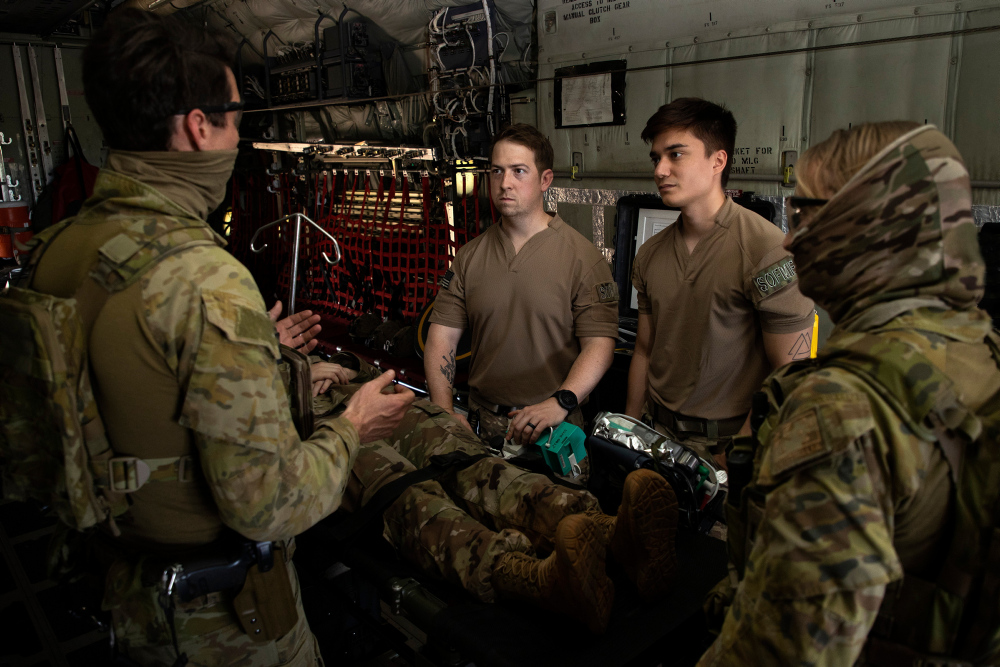‘What the Americans lacked, or lost somewhere along the way, was imagination… It was not a failure of intelligence, but of imagination.’
Elliott Akerman and Admiral James Stavridis – 2034: A Novel of the Next World War
It’s been a while since I’ve written under the MCM moniker. Like earlier pieces in the series I’ve been grappling with a concept that is making me increasingly uncomfortable, so I have cast my net into the PME network to try and work out a solution. We have a problem in Western militaries that is going to bite us on the backside sooner or later.
We plan using constraints-based doctrine, which means we train within a constraints-based paradigm, which means we will become rapidly overwhelmed when we face a free-thinking, outcome-based adversary.
We have seen over our recent history that at all three levels of war, we have been found wanting at coming up with accurate defeat mechanisms. The old adage of ‘fight the adversary, not the plan’ is oft quoted but poorly executed. But all is not lost, because I think we have realised this flaw in our systems and slowly but surely are starting to overhaul the way we train to plan, and plan to win. My concern though is that we may be too late.
To illustrate, let me use some doctrinal examples from the five eyes community, focussed on the provision of combat health support and in particular the use of time-based metrics of care. The Australian ADDP 1.2 and LWD 1-2 which are our joint and Army specific health doctrine maintain the 10-1-2 metric as a principle planning guideline for managing combat trauma.
‘10 minutes to stop catastrophic bleeding and secure an airway, 1 hour to advanced resuscitation, 2 hours to damage control surgery.’
This is despite the fact that there is actually very little evidence that this metric truly alters clinical outcomes. Its genesis in a recent period of conflict (low intensity COIN) differs greatly to what we’re being asked to prepare for and except in truly optimal circumstances (something we’re unlikely to see again) is likely to be unachievable.
Bottom line, it’s now a constraint-based dogma that has got its claws in deep. The outcome? Risk-averse training, a dominance of technical interference over mission focussed planning and a workforce that is being set up to fail. Rather than being focussed on winning, there is a constant need to make our plans fit the 10-1-2 metric.
What do I mean by this? In combat, soldiers are going to be wounded and will die; however, 10-1-2 is used as a mechanism to ensure that we can save as many as possible, if we plan in line with this metric. But if it’s not true and is unrealistic in the operating environment when – not if – we fail to achieve it, soldiers and commanders will blame their inability to adhere to the metric rather than the tragic realities of war.
Worse, however, is that these tragic outcomes could have been mitigated better – though not completely ameliorated – had we used a little imagination and some principles-based planning processes.
Let’s counter this with the most recent US Joint Publication 4-02 (JP 4-02), Joint Health Services, last revised in late 2018 (so still somewhat old). There is not a single time-based metric to be found. Despite this publication being the birthplace of the ‘Golden Hour’ metric, by 2018 the realisation had developed that when Health services constrained combat action, it increased risk to combatants.
The reason for this is simple; the longer it takes to win the fight, the more casualties you are going to receive. This doctrine is littered with enabling statements to ensure a principles-based, mission focussed health support plan is developed to support the mission. It grounds the planner to tactical and operational realties and then supports imagination in overcoming the unique challenges of delivering health care in an imperfect environment, with imperfect resources against a thinking adversary.
The outcome? Health plans that prioritise risk to mission AND personnel. By adopting a guiding principle of acknowledging that fit combatants win the fight, the health support system can be prepared to do the best it can, as quickly as possible, on a soldier’s worst day. This intent is probably best summed up by this quote from JP 4-02:
‘Conformity with the tactical plan is the most basic element for effectively providing health support.’
We need to ensure that our doctrine remains principles based and not driven by constraints. Constraints will stifle creativity, and a lack of imagination will generate an exploitable asymmetry that we may not survive when truly put to the test of combat.
What parts of your doctrine constrain rather than enable your thinking? Food for thought, this curious month.
About the Author: Nick Alexander is a current serving Combat Health Officer, Communications Director of Grounded Curiosity and member of the Military Writers Guild. You can follow him on Twitter @Nick_Alexander4.

